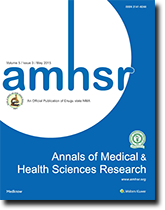

Substance abuse, which refers to the use of psychoactive substances is a major public health problem in Sierra Leone. With youths and adolescents the most vulnerable drug abusers and addicts, this study seeks to identify the triggers and stressors that lead youths and adolescents into substance abuse.
We conducted Key Informant Interviews (KIIs) and Focus Group Discussions with substance abuse addicts and abusers, and key stakeholders in the selected communities, during September 2023. We employed thematic analyses to extract the main themes in each questionnaire and analyzed using ATLAS.ti version 7. We presented direct quotations with a thick description of every finding.
A total of eight KII sessions were held in each district; with eight participants per session in each district. A total of nine men and seven women were interviewed. Almost all of the substance abusers and addicts confirmed that peer pressure was the main reason for them being involved in substance abuse. All of the substance abusers and addicts interviewed during the KIIs said they came under pressure from their friends to consume illegal substances. Majority of the substance abusers and addicts interviewed said they have never sought help for their substance abuse problem although many confirmed that they have suffered from some problems ranging from legal, educational, and occupational issues as a result of their substance addict problem. Our findings indicated that Kushe, marijuana, Tramadol, and alcohol were the most common substances used in the study area. The fact that psychological disorders like anxiety, boredom, stress, and unhappy life were hived out as some of the main risk triggers for substance abuse among Sierra Leonean youths in this study implies that local psychiatrists in Sierra Leone alongside other health workers should work together to provide health education on the harmful effect of substance use.
Select your language of interest to view the total content in your interested language
Annals of Medical and Health Sciences Research received 24805 citations as per google scholar report
 The Annals of Medical and Health Sciences Research is a monthly multidisciplinary medical journal.
The Annals of Medical and Health Sciences Research is a monthly multidisciplinary medical journal.